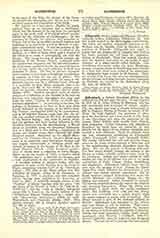

Aldegundis. Saint, virgin and abbess (c. 639-684), variously written Adelgundis, Aldegonde, etc. She was nearly related to the Merovingian royal family. Her father and mother, afterwards honored as St. Walbert and St. Bertilia, lived in Flanders in the province of Hainault. Aldegundis was urged to marry, but she chose a life of virginity and, leaving her home, received the veil from St. Amandus, Bishop of Maastricht. Then she walked dry-shod over the Sambre, and built on its banks a small nunnery, at a desert placed called Malbode. This foundation afterwards, under the name Maubeuge, became a famous abbey of Benedictine nuns, though at a later date these were replaced by canonesses. St. Aldegundis’ feast is kept on January 30. There are several early Lives, but none by contemporaries. Several of these, including the tenth-century biography by Hucbald, are printed by the Bollandists (Acta SS., January, II, 1034-35).
HERBERT THURSTON

